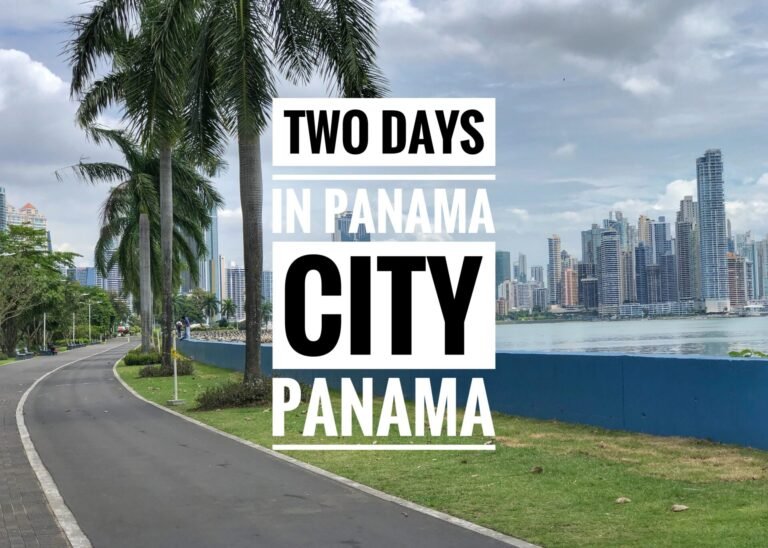
Venturing off the beaten path in Hungary beyond Budapest offers a more secluded, less expensive and more authentic experience into Hungarian culture, history, and life. Opportunities for finding travel perks like curative thermal baths, luscious and quality wine, hospitable people, and enchanting medieval villages abound too. What more can you ask for? Not only Budapest awaits the traveler in Hungary!
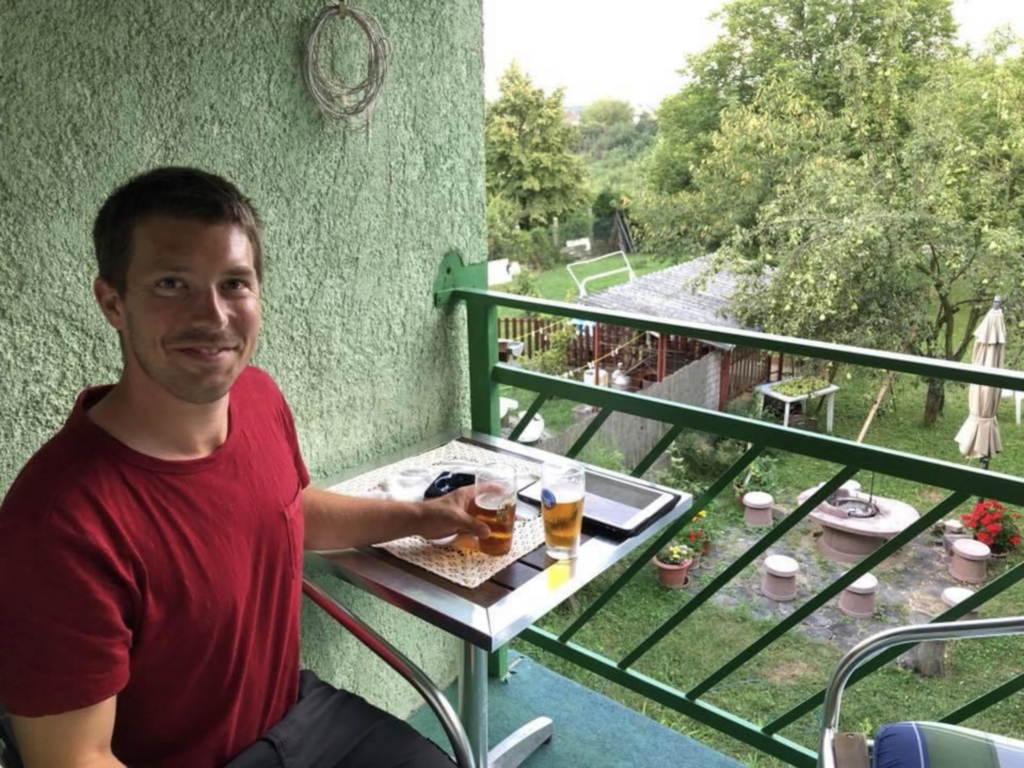
Eger
The most amazing Hungarian hospitality! We arrived to the town of Eger (egg-air) which is about 2.5 hours from Budapest and then took a local bus to another nearby small village of Egerzolat. (Not to be confused with nearby EgerzolaK a mere 5 miles away!)
When we tried to speak our fumbled Hungarian while getting on the bus to Egerzolat, the driver simply smiled and nodded encouragingly, and gave us our tickets. They did this a lot… seemingly excited to have tourists and new faces. But when we arrived to our airbnb homestay, the hospitality rocketed to all new proportions. Steve and Eva immediately welcomed us to have a seat on our balcony with shots of homemade fruit brandy and some fruit.
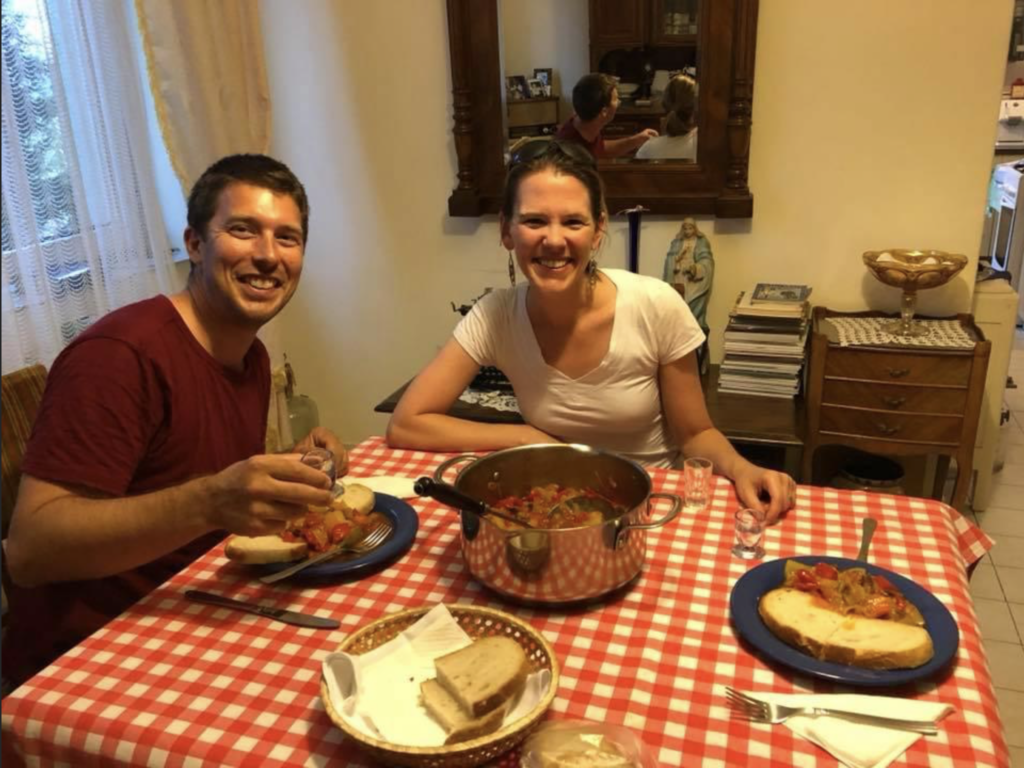
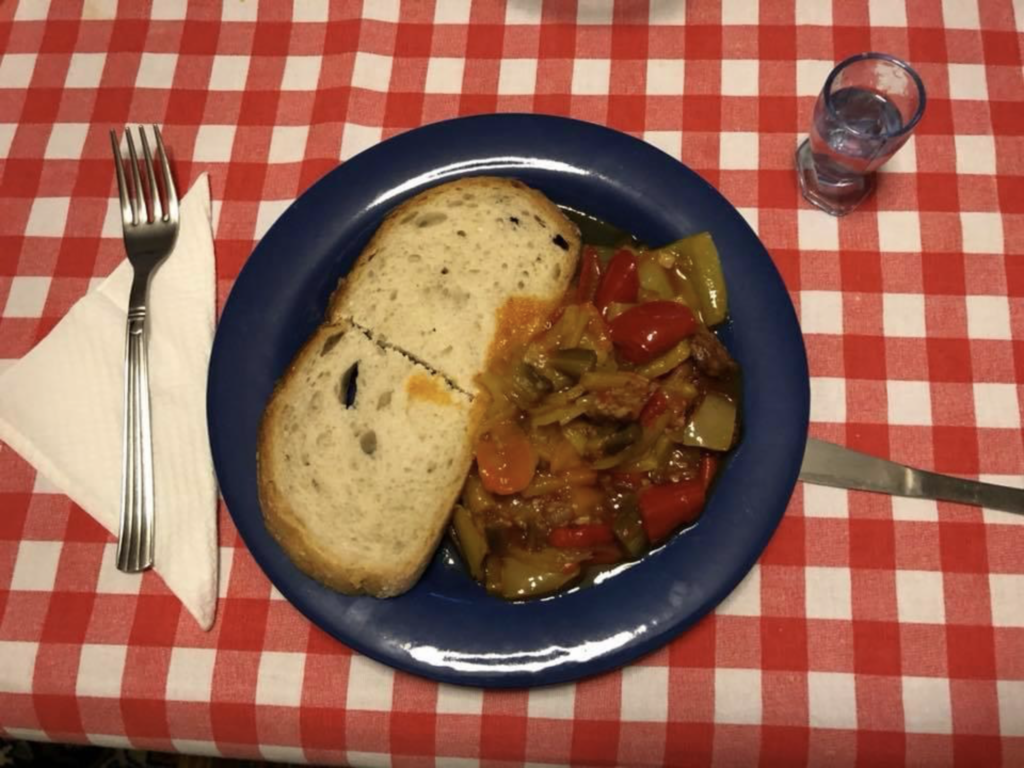
They then invited us to dinner with more alcohol than we could drink, including homemade fruit brandy, wine, and what would end up being our favorite meal: Letcho, a stew of peppers, tomatoes, onion and sausage. Oh, and paprika. (Because it’s not Hungarian without it.) This continued for our entire three night stay with meals of gulas, caprese sandwiches, and desserts we can’t pronounce! We couldn’t believe when they refused our money for their amazing extra services. Not exactly the norm at an Airbnb.
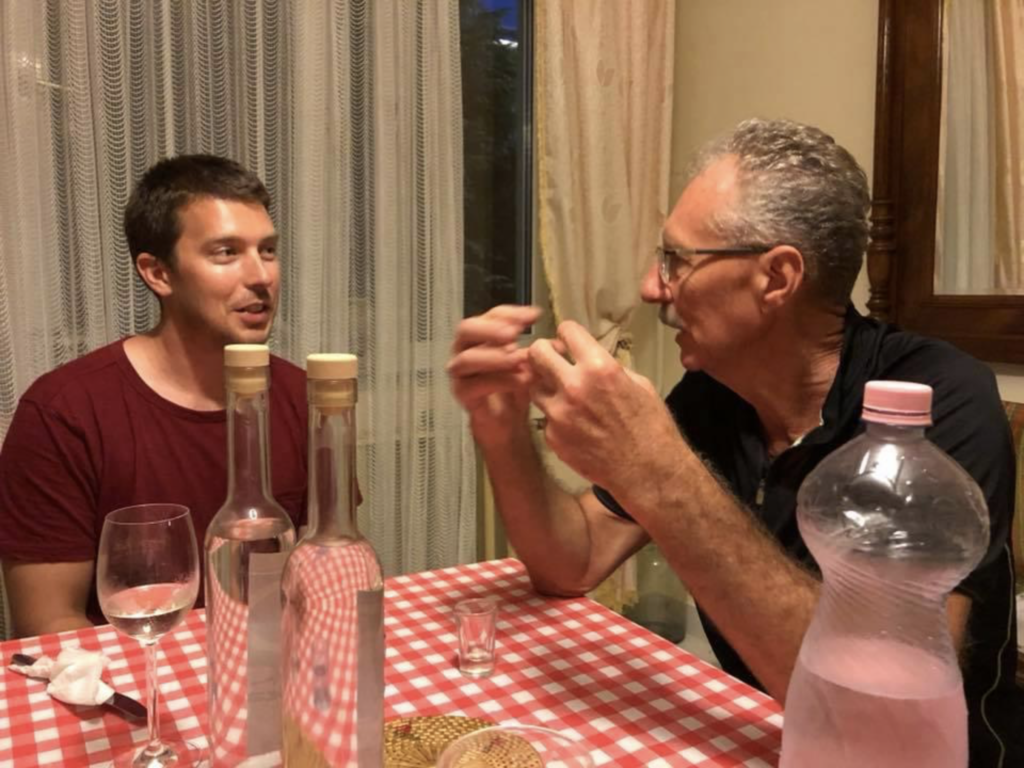
We loved getting to know them, chatting, and learning about Hungary through them. Steve spoke enough English to get by, while Eva just merrily nodded along. Needless to say, there was lots of lost-in-translation laughter. Oh yes, this is why we travel. ❤️
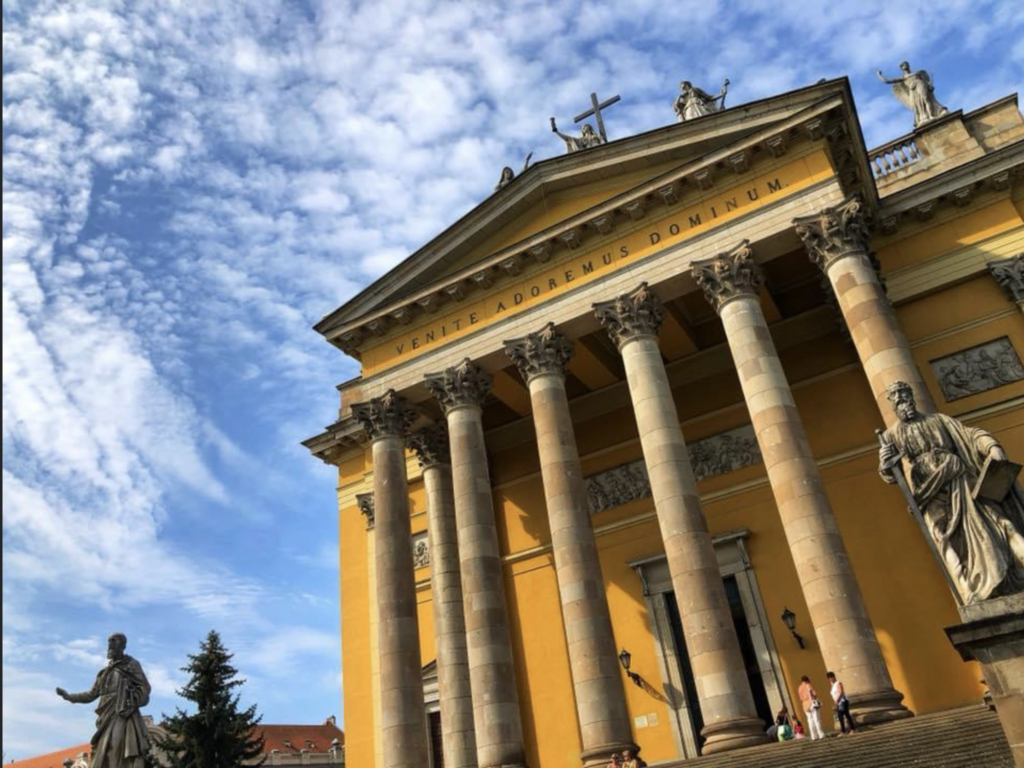
Exploring the enchanting village of Eger. Here is the Cathedral Basilica of St. John the Apostle, built in 1831.
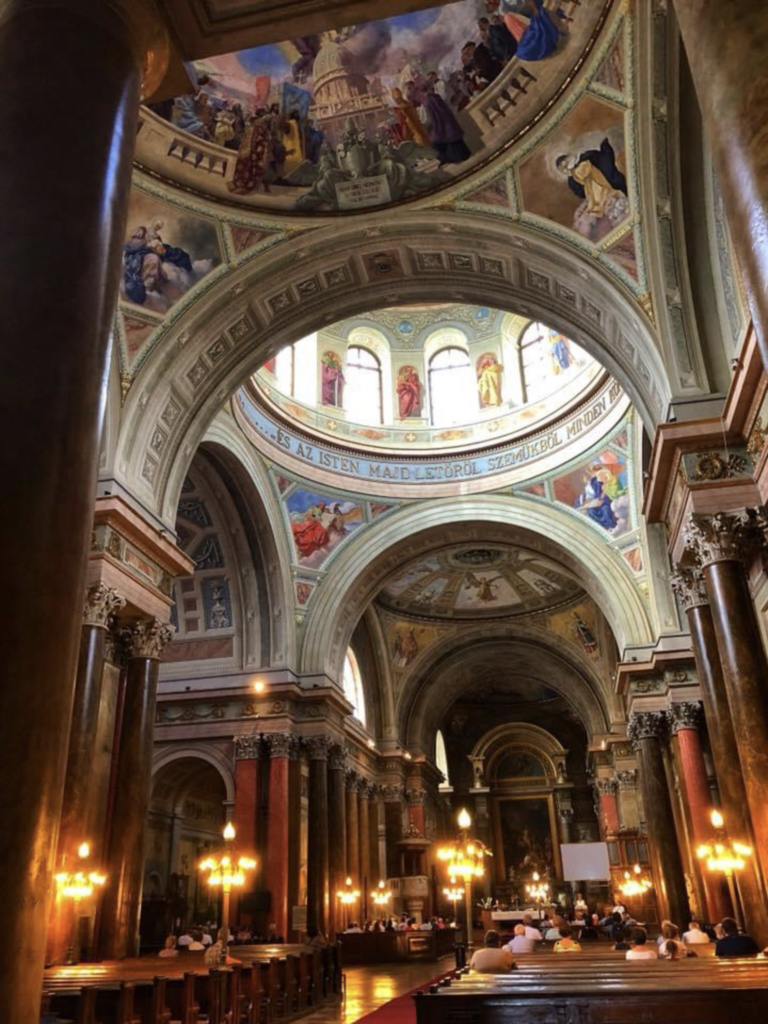
The dome of the cathedral is lavishly decorated and a height of 40 meters.
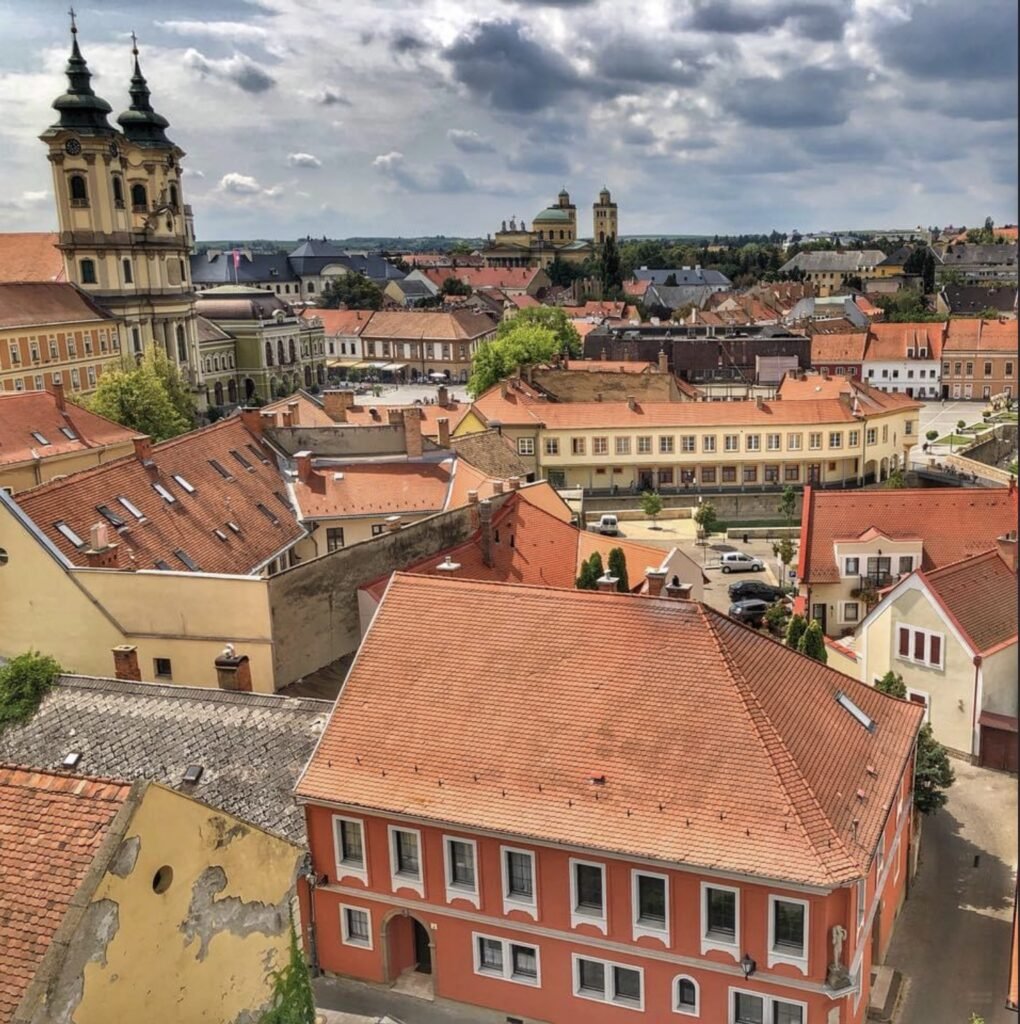
A view of stunning Eger from the castle, which in 1552 amazingly held while 35-40k Turkish soldiers besieged it under the power of only 2,300 Hungarian soldiers. This town is also known for having the northernmost minaret in Europe (sadly covered in scaffolding), thermal baths and….

The “Nice Woman Valley” as this street sign notates. In other places it’s known as “Beautiful” Woman Valley. Seems like some feminists may have gotten involved in the renaming ?
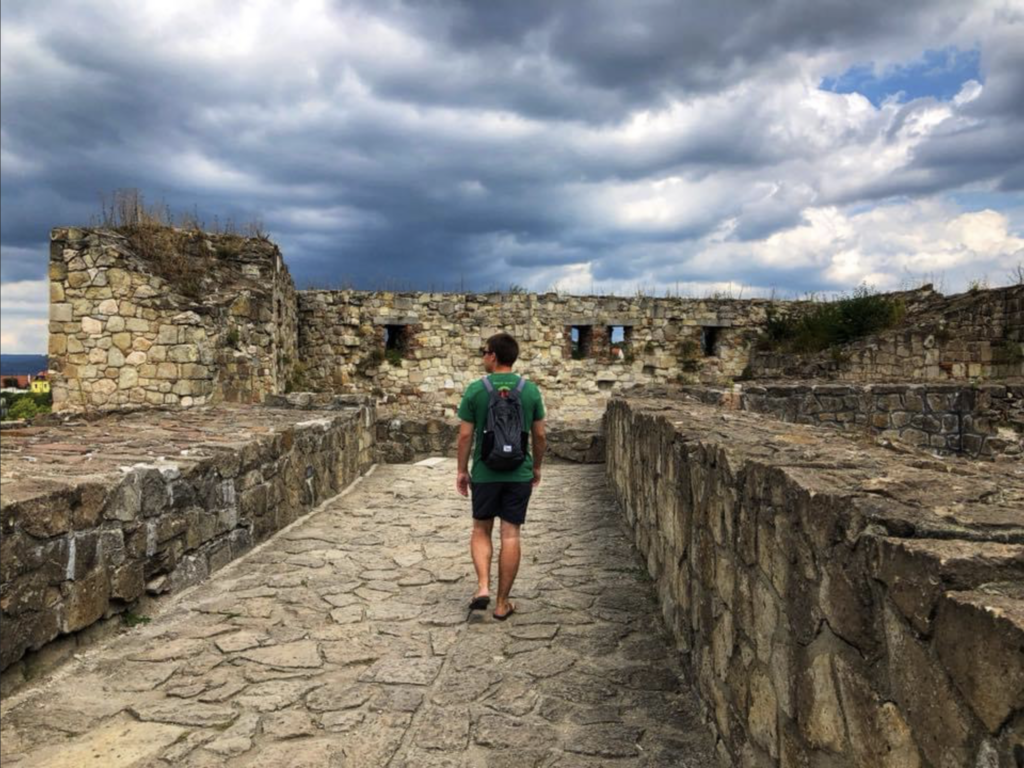
Walking along the fortress walls of Eger Castle.

The Valley of Beautiful Women
Once we worked up some thirst, we walked the 15 minutes to meet the beautiful…ahem…nice women. As you enter the area, you begin seeing structures which are built into the limestone rock. Many seem currently abandoned.
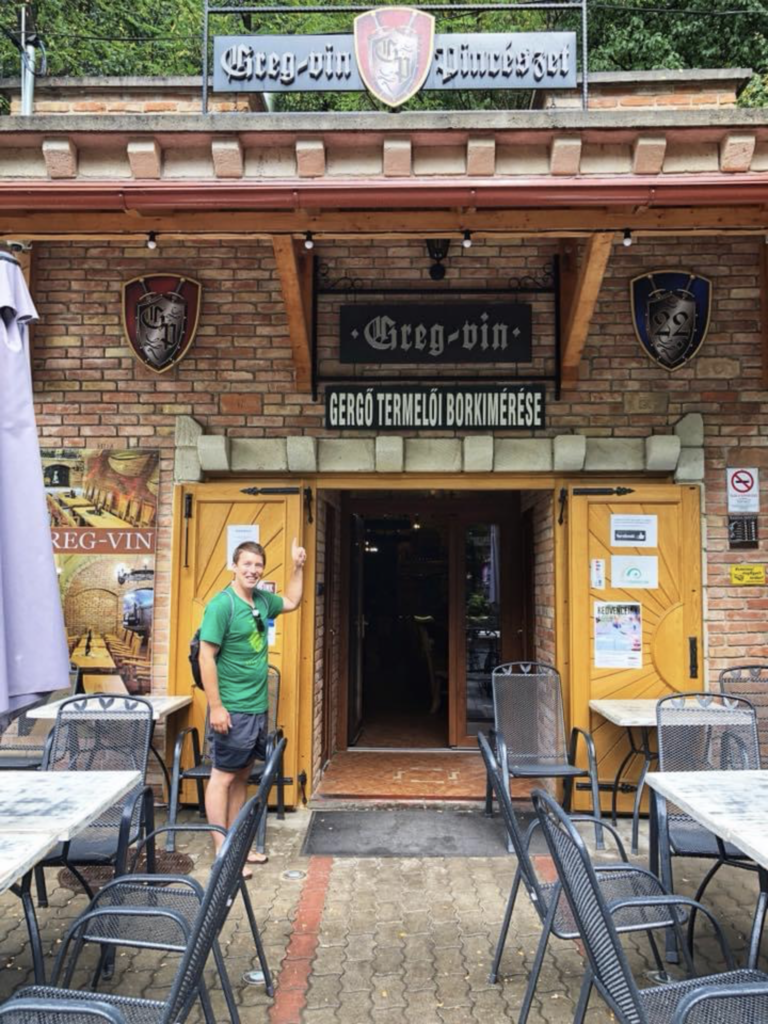
Others have been turned into cave wine cellars and tasting rooms. Greg shows off his establishment.
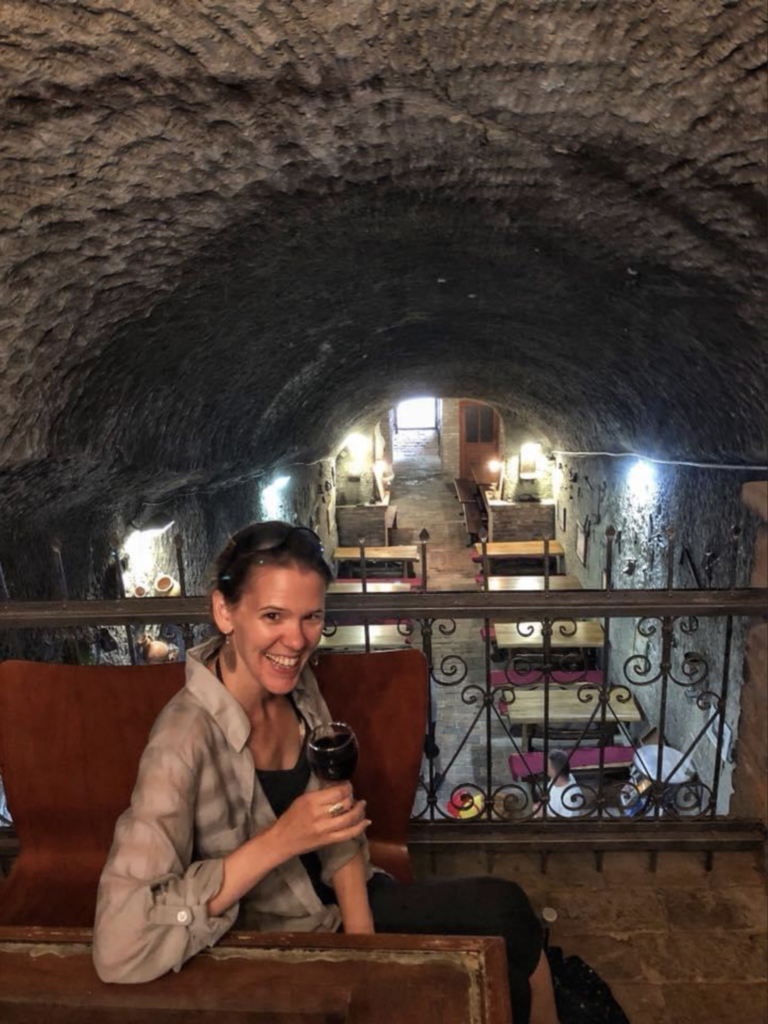
Mandy proclaims this is the best glass of wine she’s ever had in her life. It was a semi-sweet Merlot. Locally made, poured from the barrel. It was also $.59 for a glass! A two-liter bottle sold in plastic (yes, like a soft drink) was just over $4, and yes we bought one.
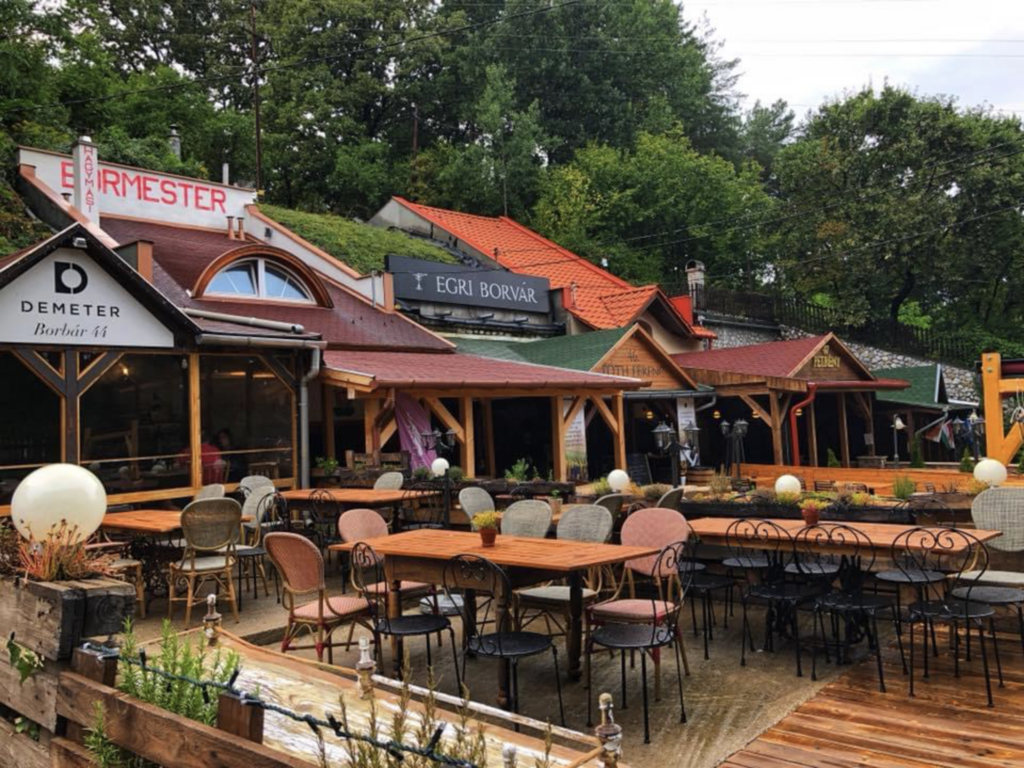
The valley is like a permanent wine festival where you can walk (sometimes stumble) from cellar to cellar. They ask you two questions when you enter: white or red? (Sometimes rose too) and then dry, semi-dry, semi-sweet or sweet? Thus, all winos will be happy with the selections. Tastings (or “test” as they called them) are complimentary, but make sure to bring cash with you here (no ATMs anywhere nearby!) for the $5 you might spend on glasses before the nice women start becoming beautiful.
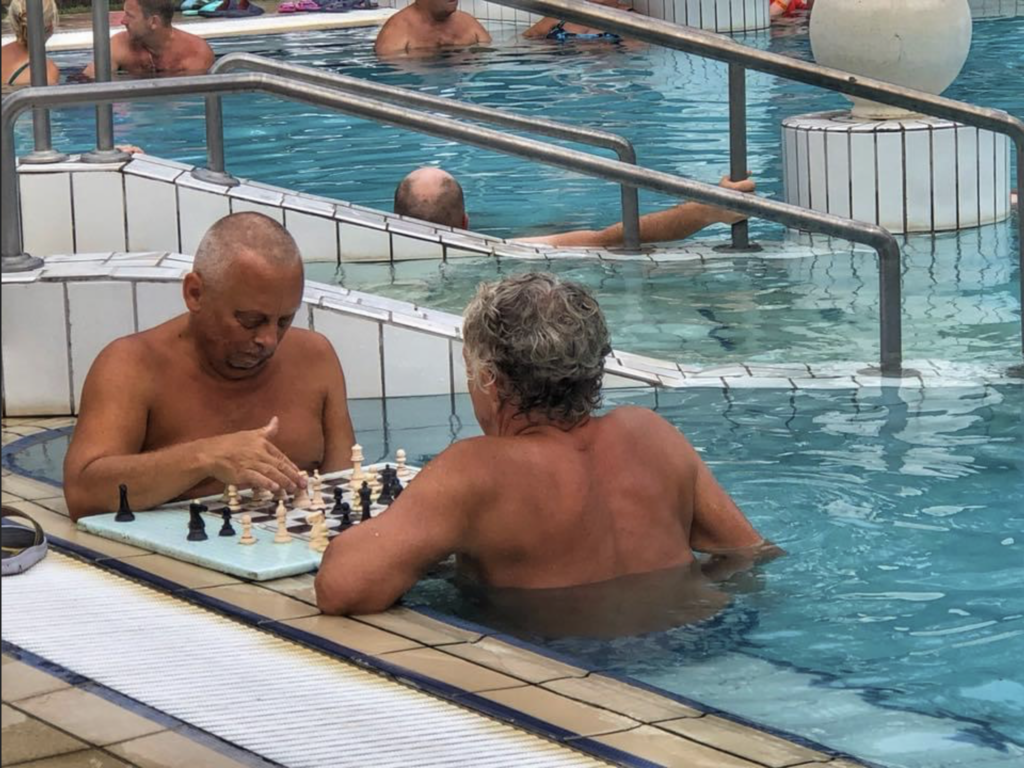
Thermal Baths
After a tough afternoon wine tasting, it’s time to relax and play some chess in the local thermal bath. 2,000 years ago the Romans discovered the amazing medical and wellness benefits of Hungarian thermal water and today, nearly every good sized town has at least one, sometimes multiple thermal bath facilities. They usually offer multiple pools with varying water temperatures, which allow you to float around for hours.
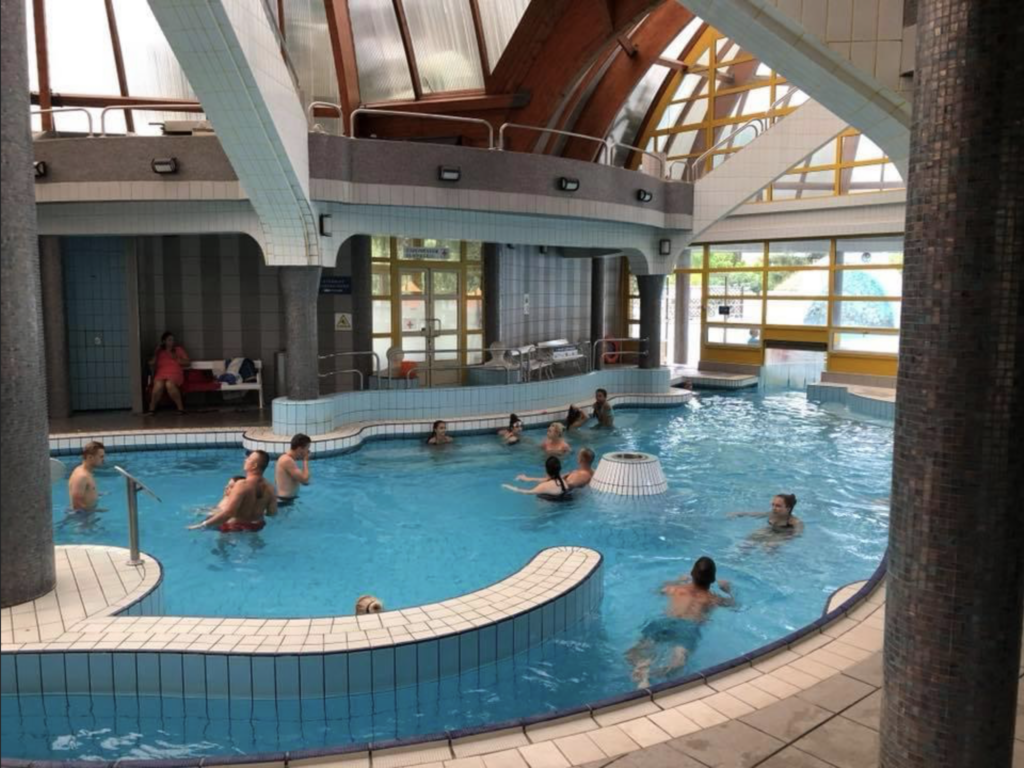
Indoor options too!
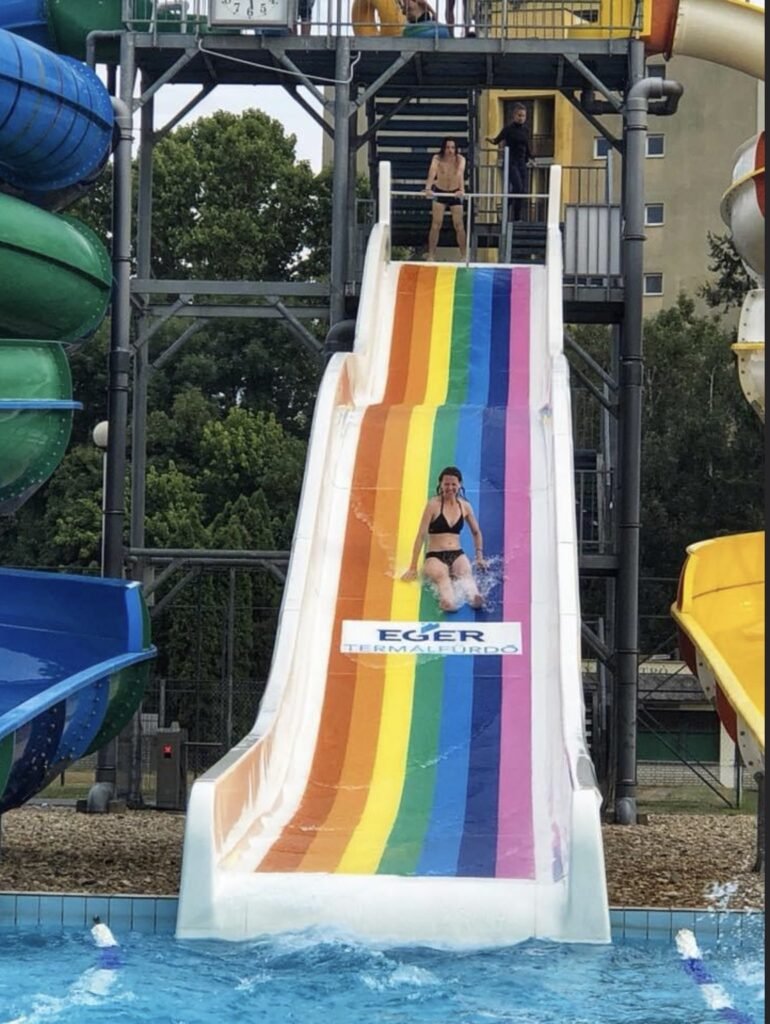
From playful slides for the kids (and kids at heart!)…
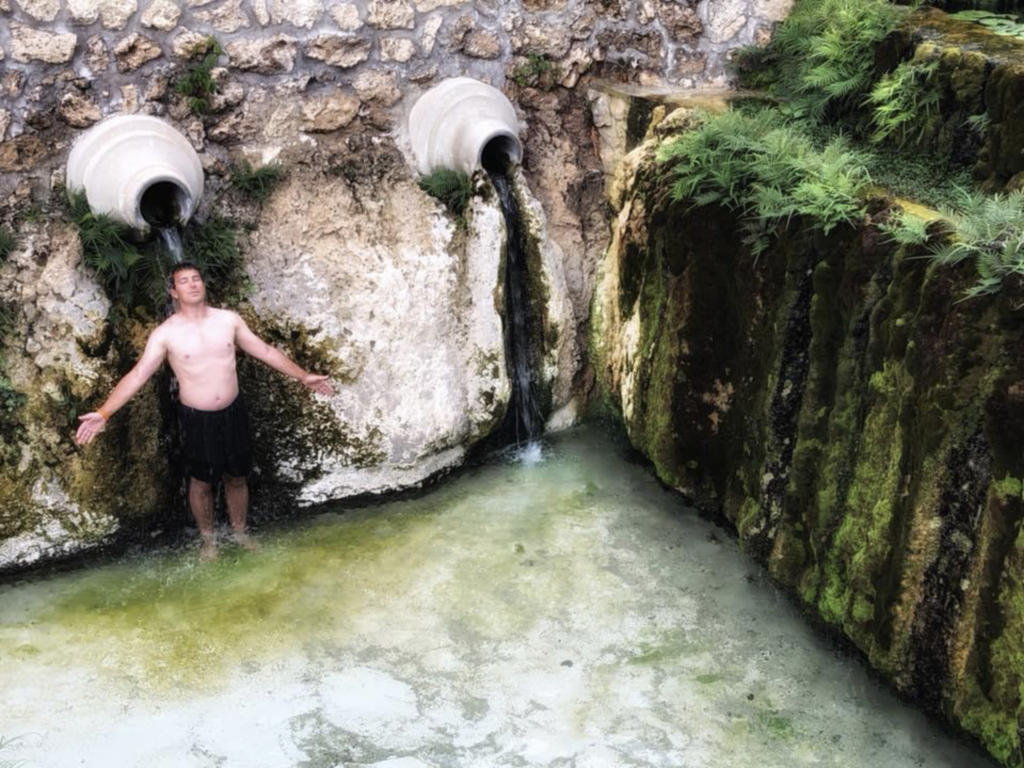
…To tranquil abysses for a bit of zen. We experienced entrance fees ranging from $2.50-$9.
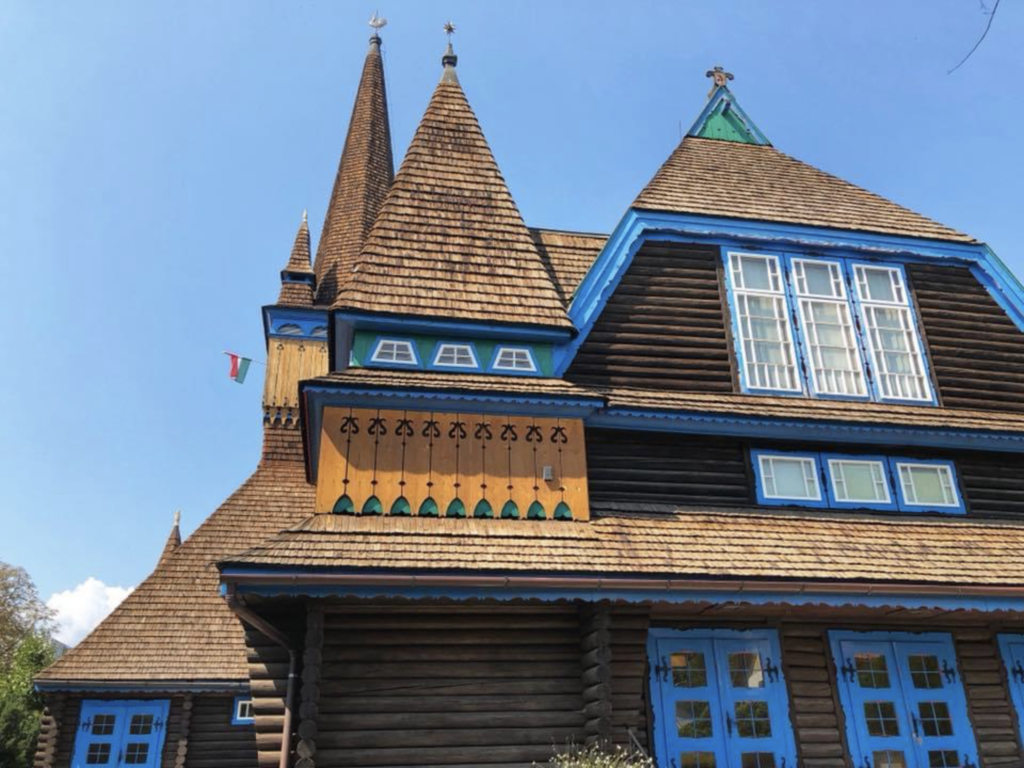
Miskolc
Moving further east from Eger, we took a 1.5 hour train ride to Miskolc, Hungary’s third biggest city at 158,000. Here is their famous Wooden Church which was only built in 1999 to replace the previous one destroyed by arson in 1997. The original one, which looked similar was built in 1637.

Walking the streets of Miskolc.

Mandy tries out the “O.”
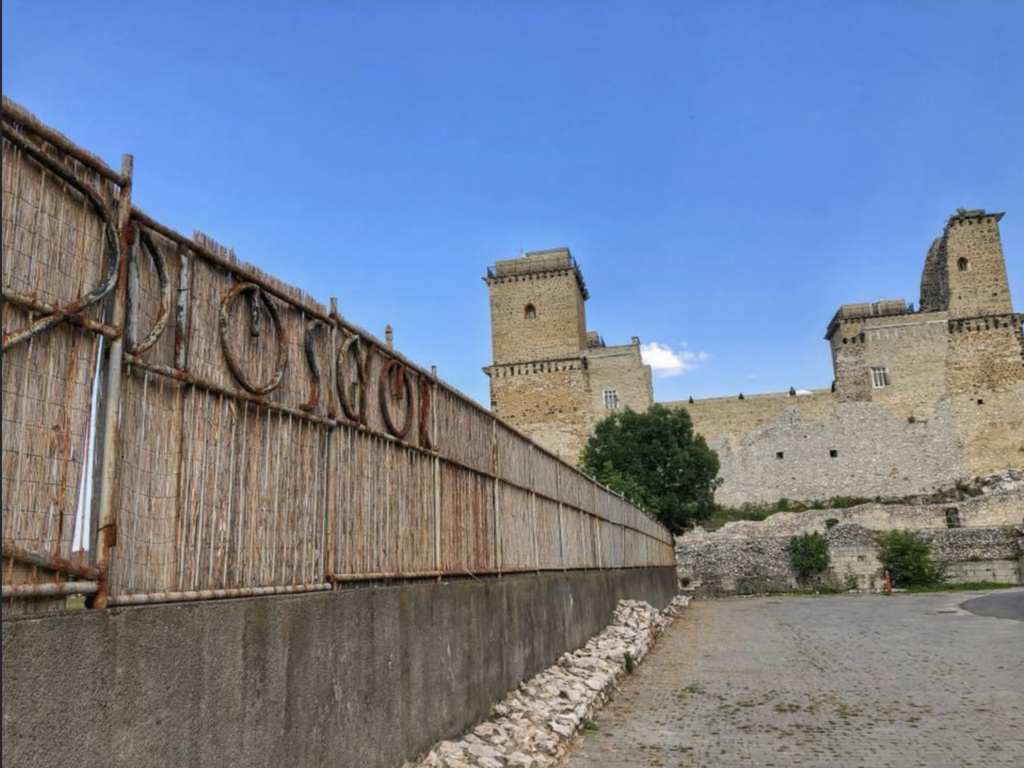
Diosgyor Castle
The medieval Diosgyor Castle of Miskolc.
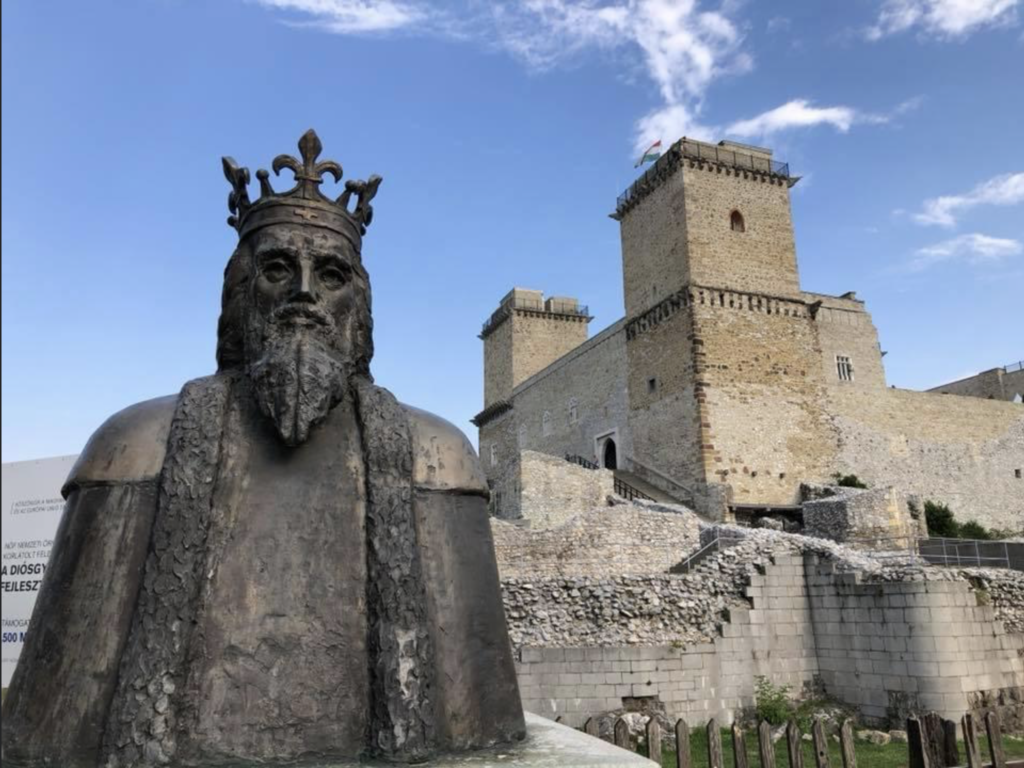
The Castle of Diosgyor in Miskolc is known as Queens Castle and although many people reminisce about the ruins of the castle from the 1300’s, it is largely reconstructed.
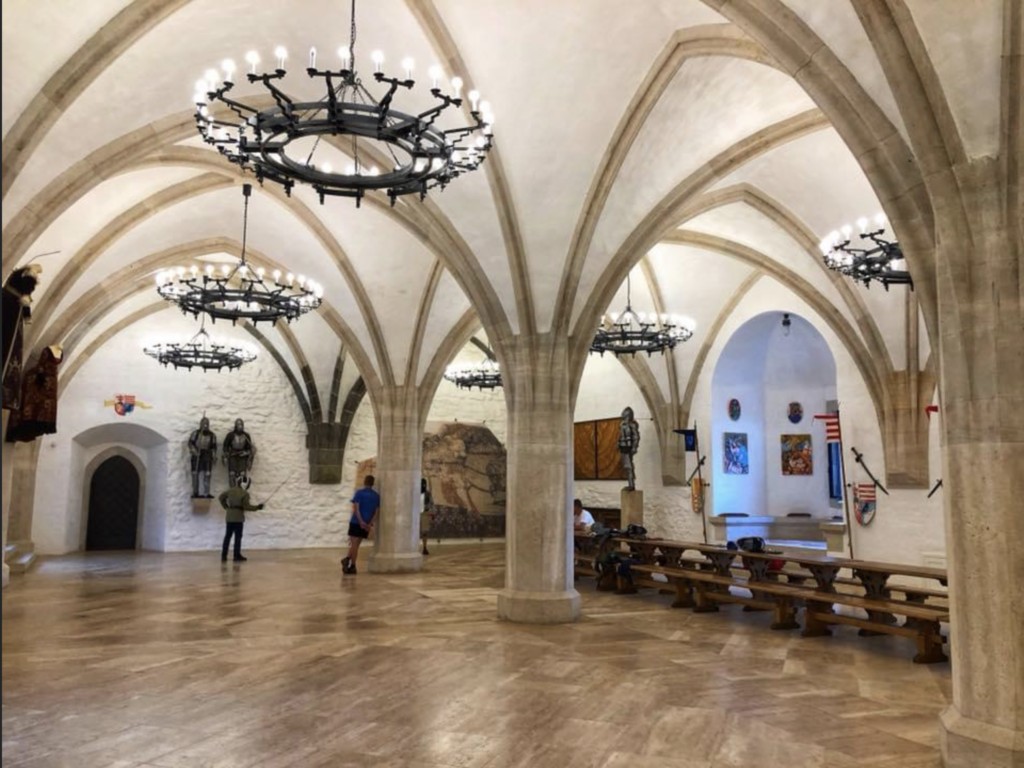
Touring the castle was well worth it. Here is Knight’s Hall where visitors can pick up a sword and hash out your disputes by fencing.
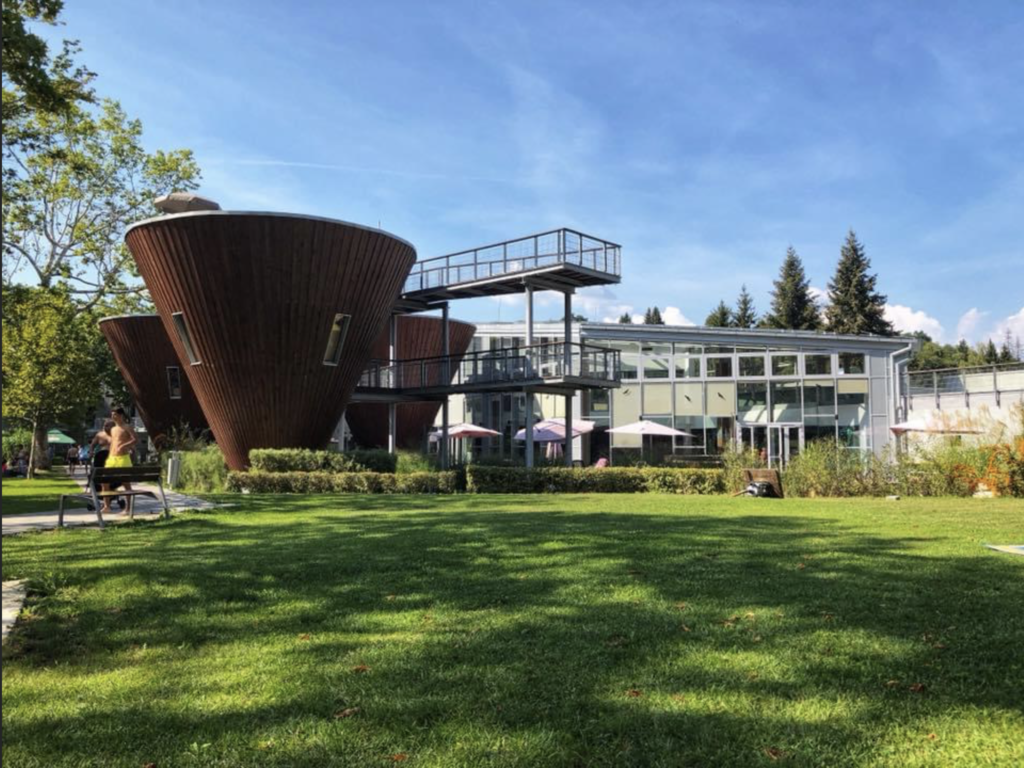
Visiting another thermal park in Miskolc using our Miskolc Tourist Pass which allowed entry into multiple tourist attractions. This is the “wellness center.” The wooden cone-like structures were saunas, which also has splash pools on the roof. Inside were also jacuzzis, steam rooms, ice rooms, salt rooms and a fitness center. (As if we’re gonna take a spin on the elliptical.)

Mmm. This looks better. Fried dough with sugar and cocoa on it. We were very lucky to get to be in Miskolc for St. Stephens’ Day on August 20, which is the day Hungarians celebrate when their land officially became Christian around 1000 AD. We got to sample an evening of games, fried dough treats, festivities, concerts (including a very interesting rock legend), and fireworks. So fun!
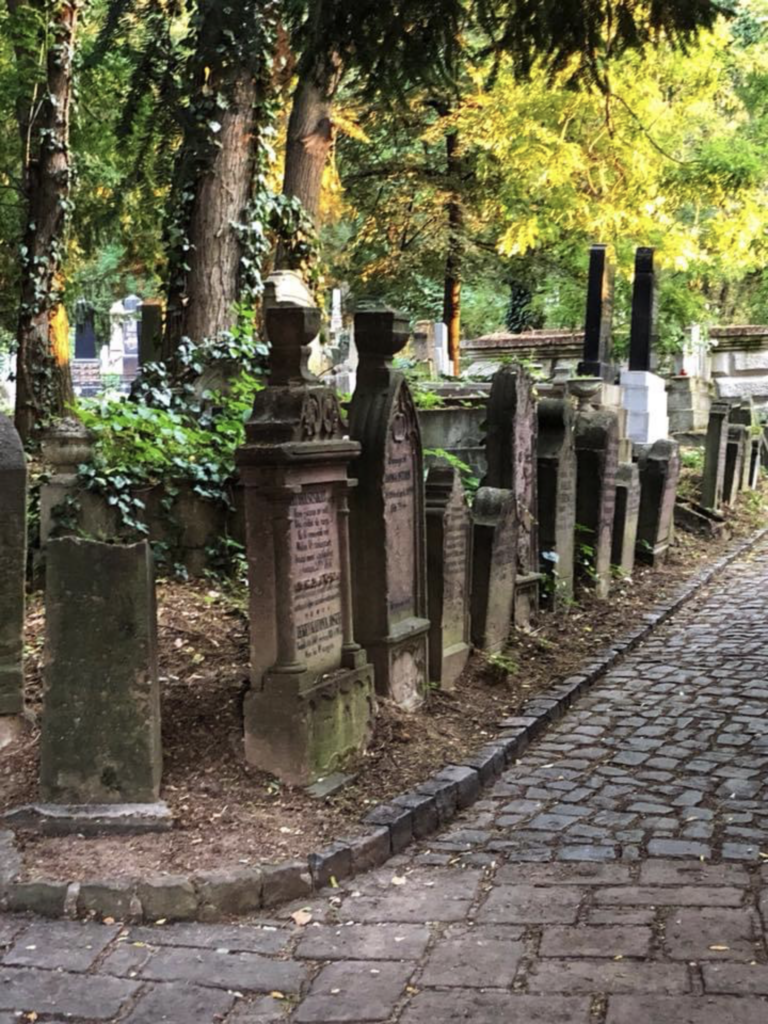
Finding some peace in one of the beautiful Miskolc cemeteries.
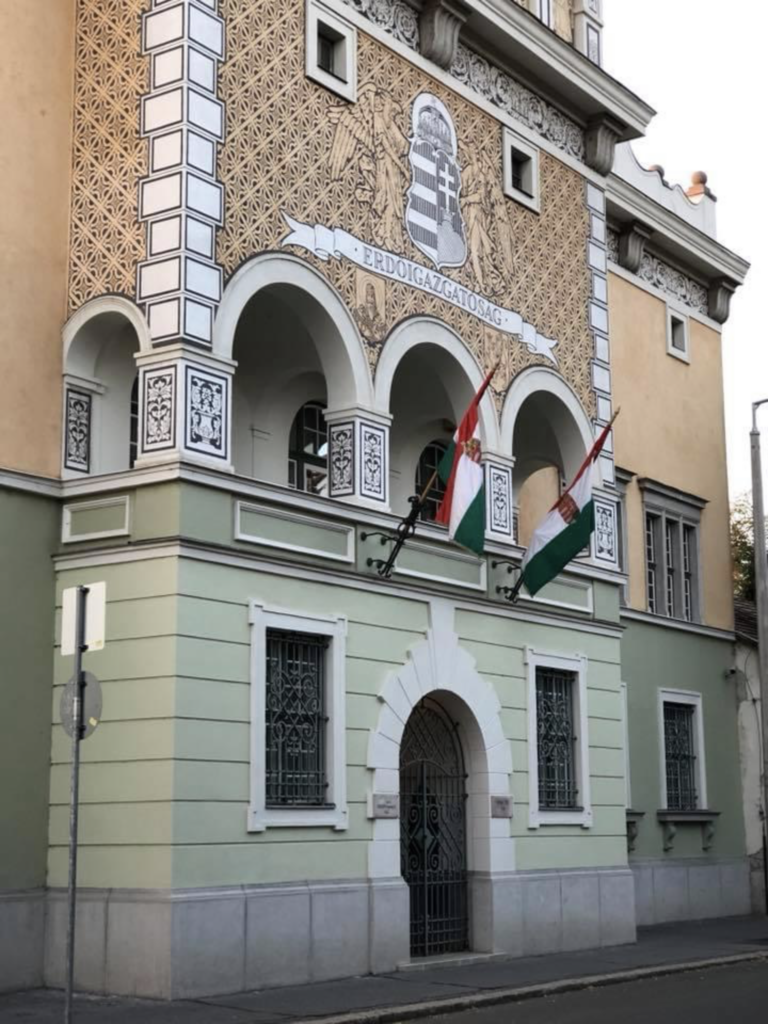
Lovely Miskolc architecture.
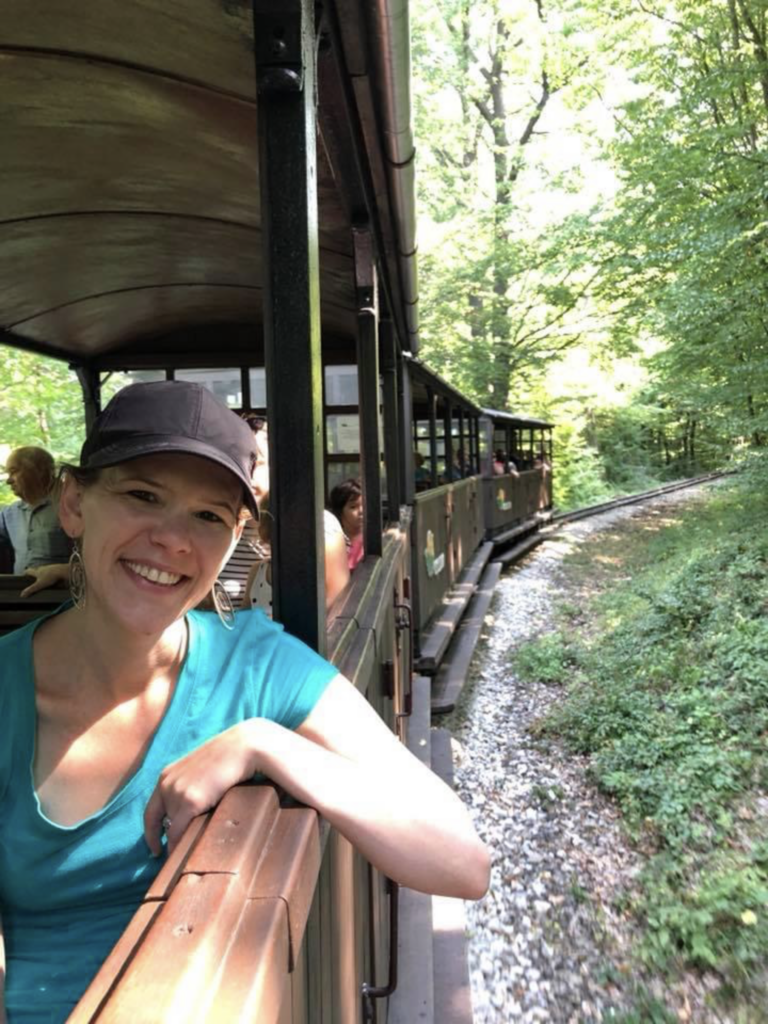
Narrow-gauge Lillafured Forest Train
And one of our favorite experiences…riding the narrow-gauge Lillafured Forest Train into the Bukk Hills for a day of exploration and hiking. Lillafured is dubbed as “Hungary’s Lungs” providing year-round unforgettable offerings.
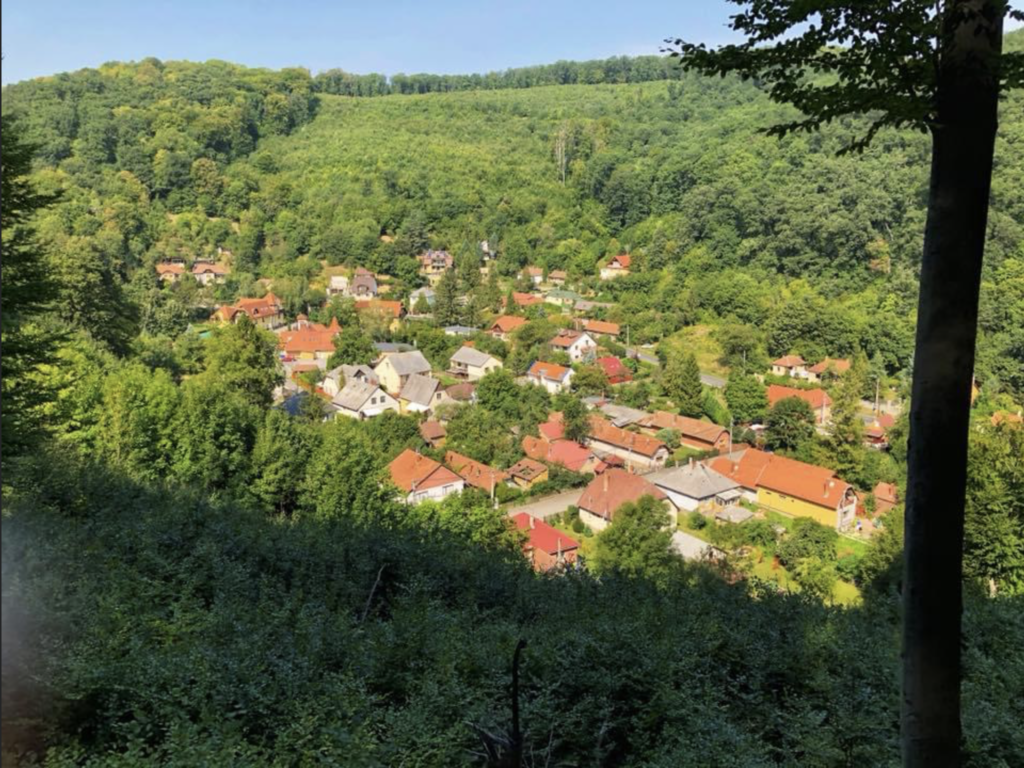
The secluded forest village of Lillafured, viewed from the Miskolc forest train.

The Palace Hotel of Lillafured. Live out your princess fantasies here!
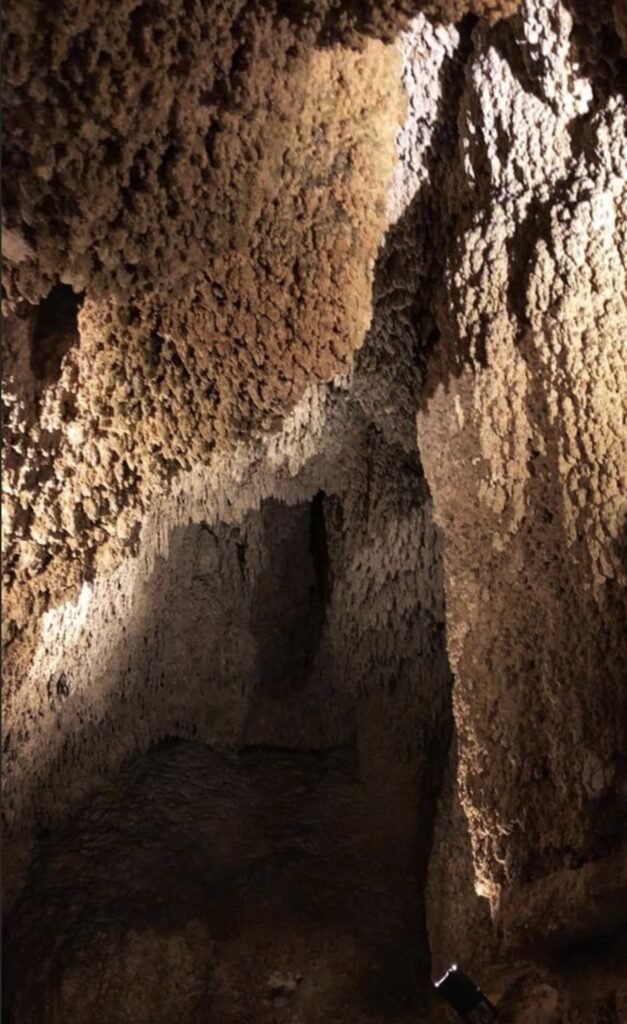
Anna Sinter Cave
Visiting Anna Sinter Cave. It is a very unique cave around in Europe. The white heat delivered by the Szinva stream before thousands of years created unique sinter formations. You can see petrified leaves, spears, branches and moss curtains covered by sinter. Most of the smaller holes are come into being when the large trunks rotted in the rock. Unfortunately our tour was cut short because a poor woman slipped and broke her ankle going down one of the staircases.
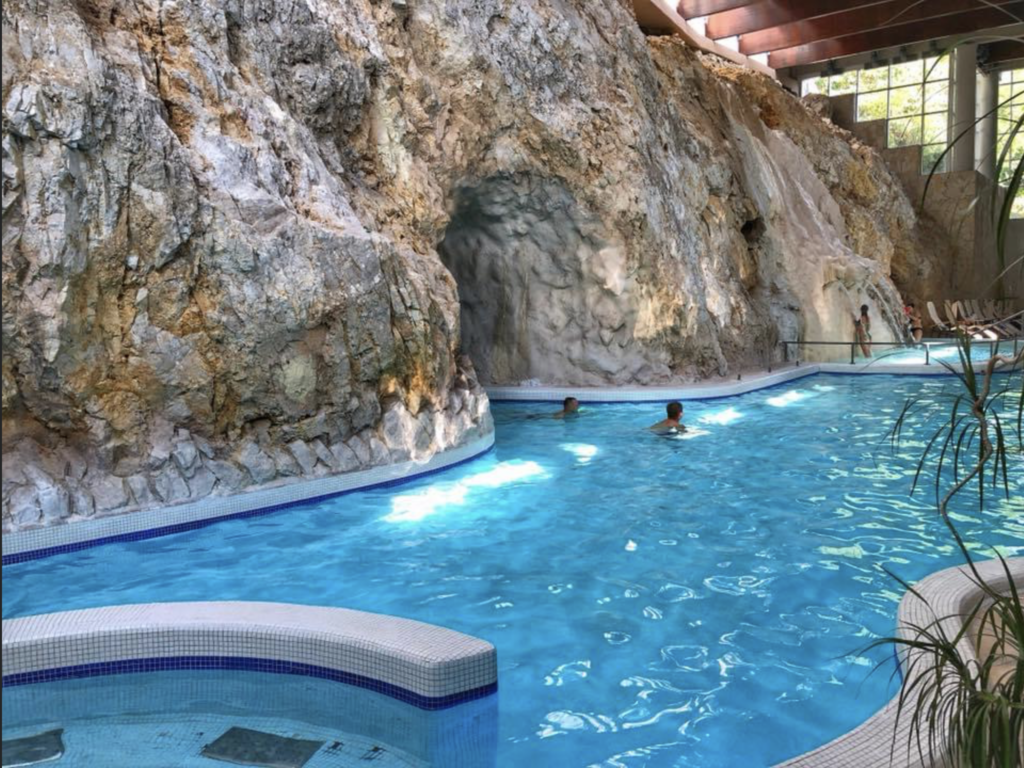
Cave Bath of Miskolctapolca
The next day we went to the Cave Bath of Miskolctapolca, in Miskolc. It is unique in Europe and is basically a series of warm water cave tunnels and rooms built into natural cave limestone rocks. It is known to help with rheumatic issues and joint problems.

A lazy river full of bath tubby water.
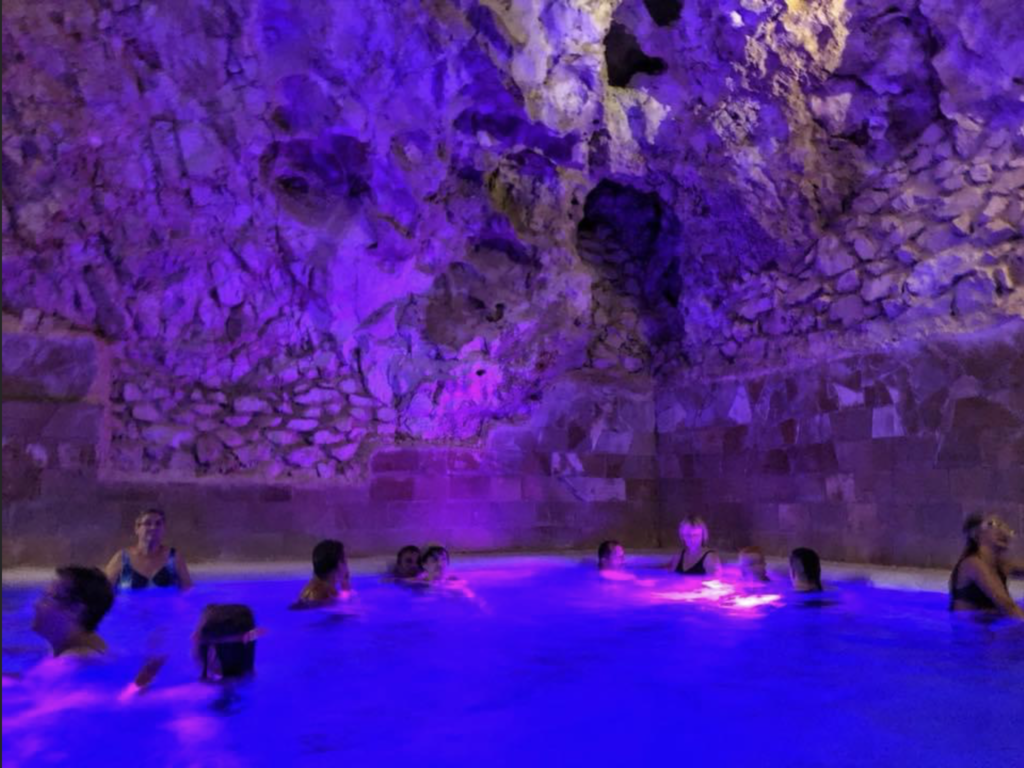
Beautiful, and an incredible experience but in summer it can be quite overcrowded…Make sure to get there early for a chance at a bit of solitude.
A video tour of the caves with some nice elevator music for your listening pleasure. Haha! You can see how many people were there at some points! Yikes!
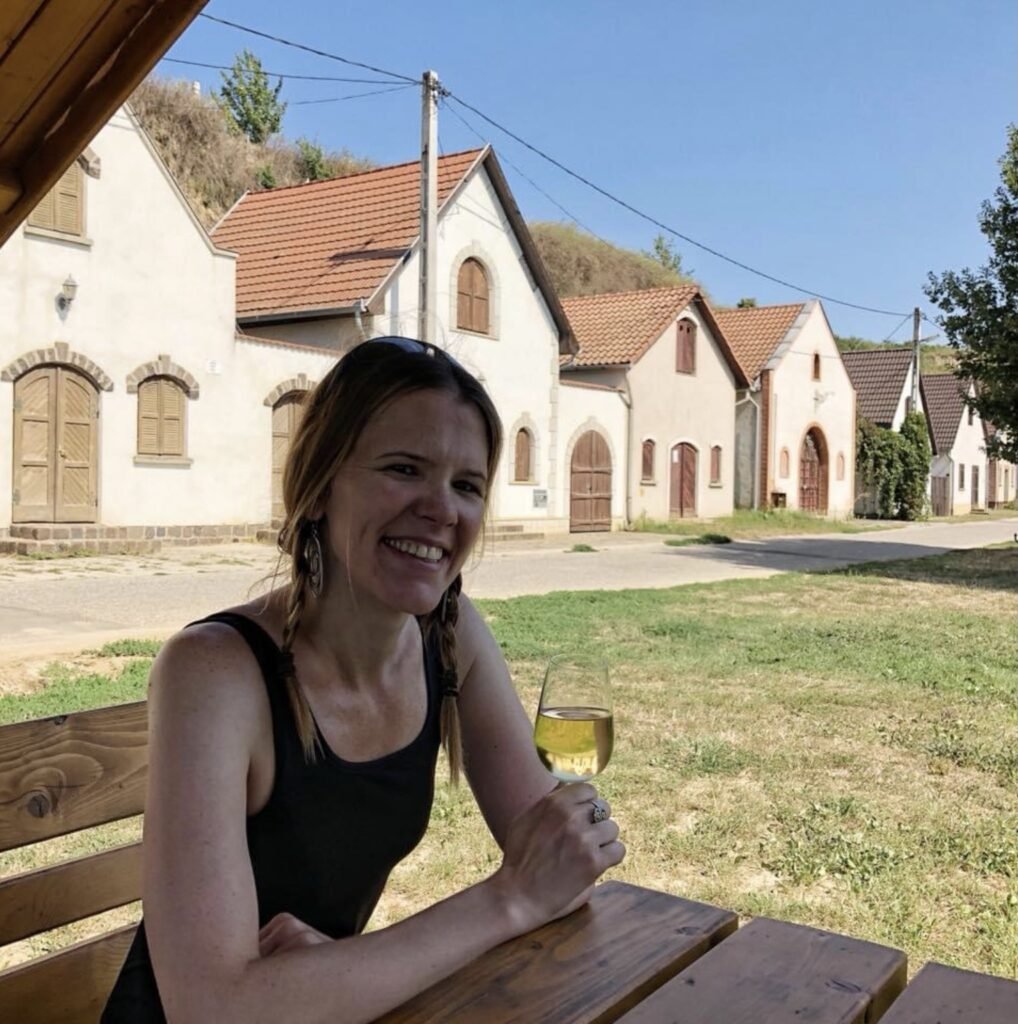
Tokaj
From Miskolc, we took a day trip to the very famous UNESCO world heritage wine region of Tokaj, which was first mentioned as a wine producer in 1067. This region is noted for its sweet white wines made from grapes affected by a noble rot, a style of wine which has a long history in this region. The “nectar” coming from the grapes of Tokaj is also mentioned in the national anthem of Hungary. Wine connoisseurs (we’re not claiming this status!), will know Tokaj is one of the world’s oldest botrytized wines. What we know, however, is it was mighty tasty and an equal value to the valley!
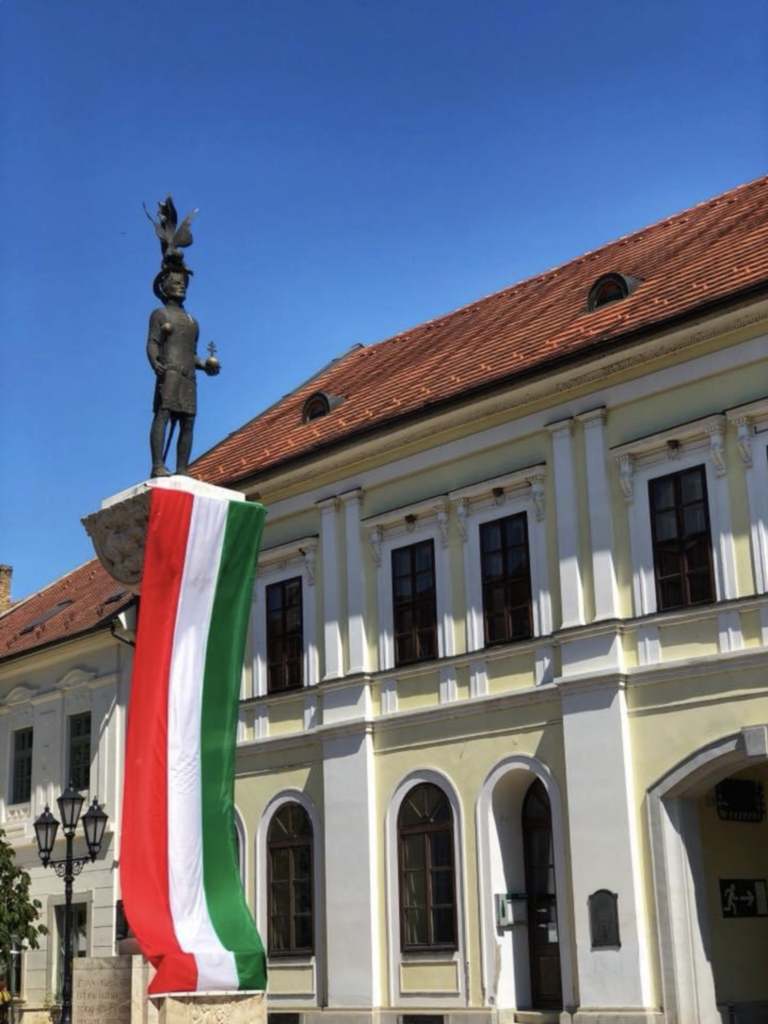
Walking the streets of the tiny town of Tokaj.
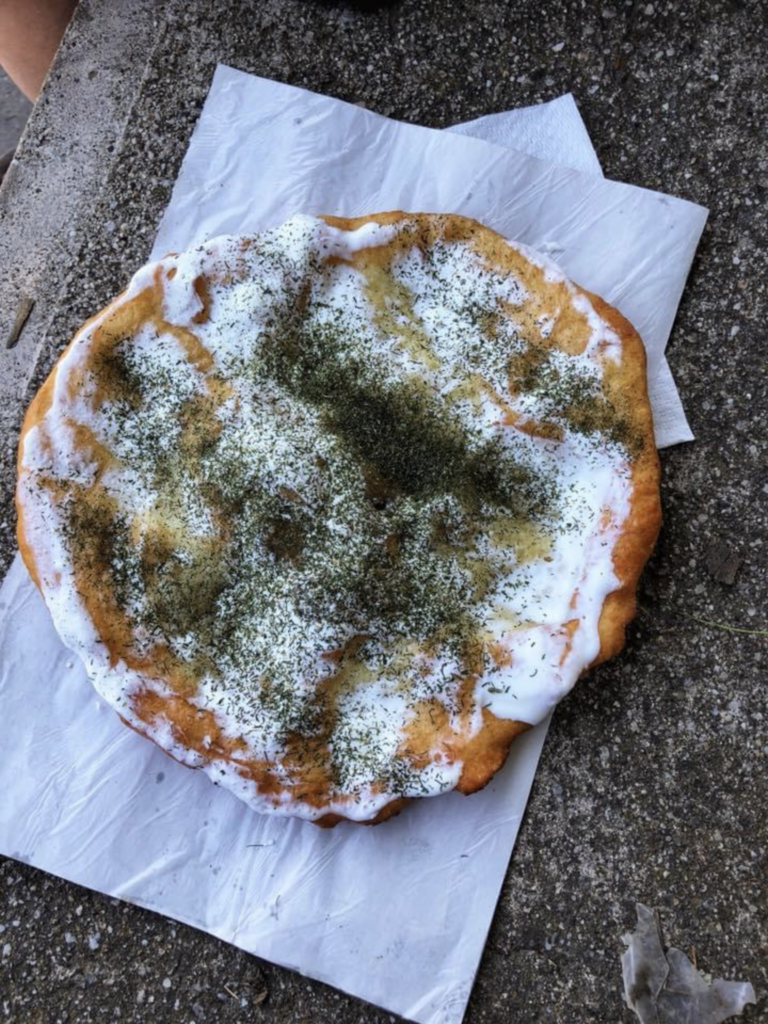
Trying our first Langos, a Hungarian staple. Fried sourdough bread with toppings, usually more savory than sweet. We sampled ours with sour cream and dill, but sorry to say we were not overwhelmed by delicious-ness.
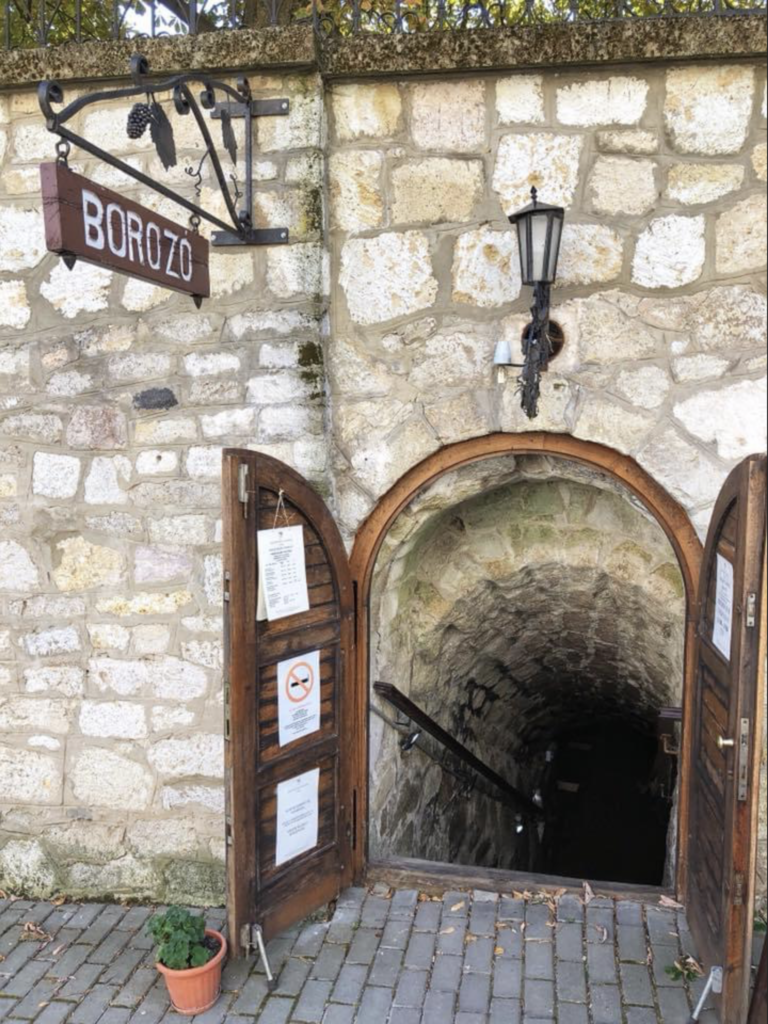
More cozy, cave-like wine cellars await!
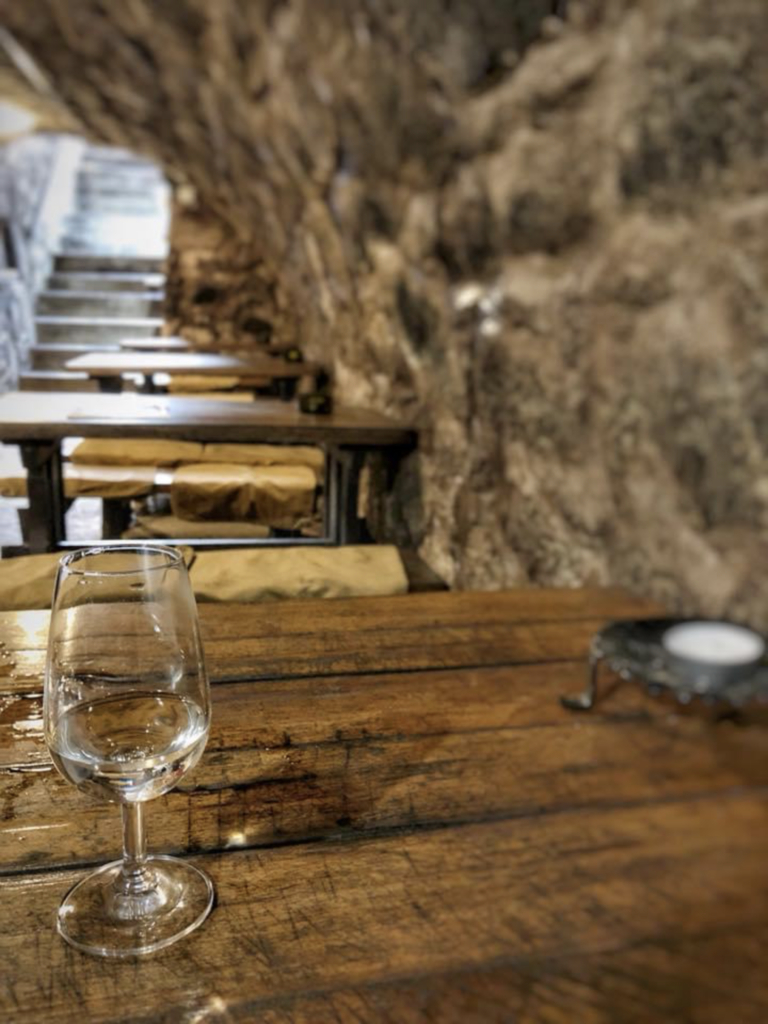
White wine lover paradise!
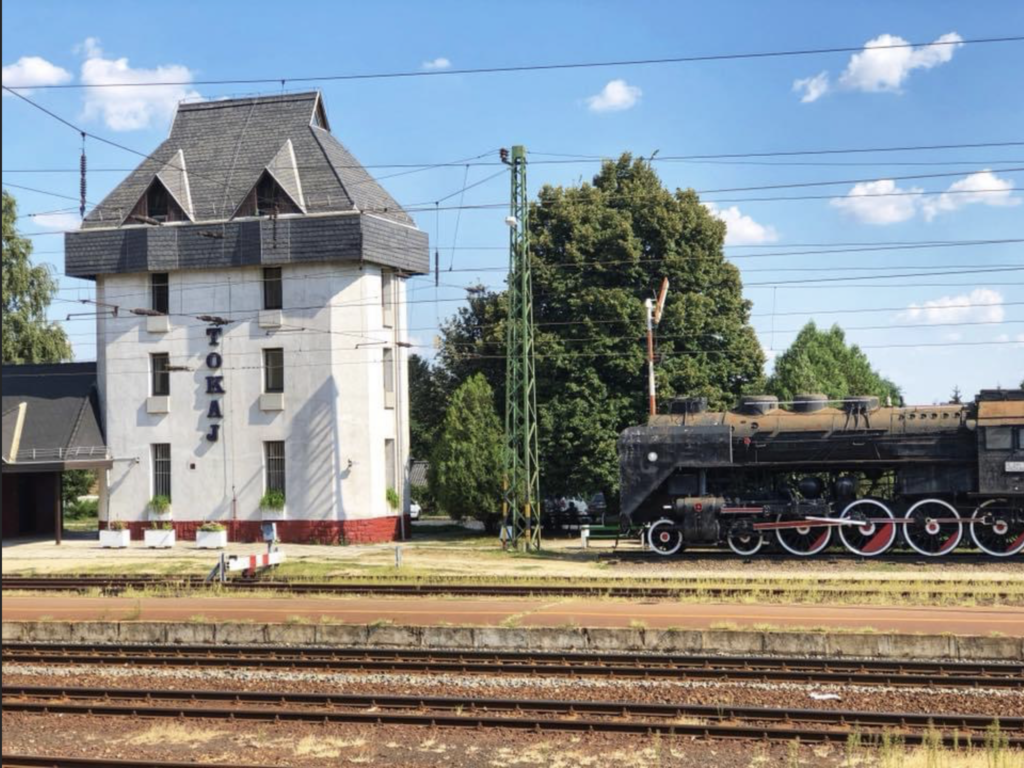
Stepping back in time at the train station.
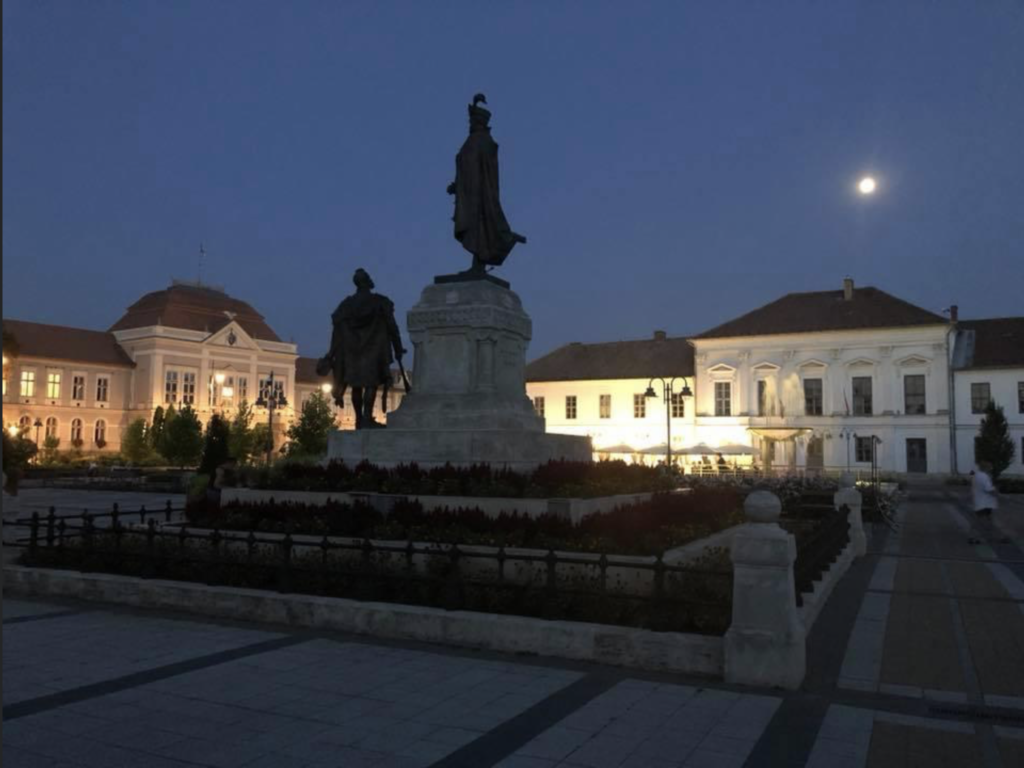
Hajdúböszörmény
And our last stop, which was actually the result of a fluke. Mandy booked our AirBnB in the town of Hajdúböszörmény, when she should have booked in the town of Hajdúszoboszló. I mean, with names like that, how is that possible? Fortunately it turned out to be a very pleasant mistake. The town and square were very enjoyable to stroll through, peaceful, and the square happens to be one of the biggest in Europe.
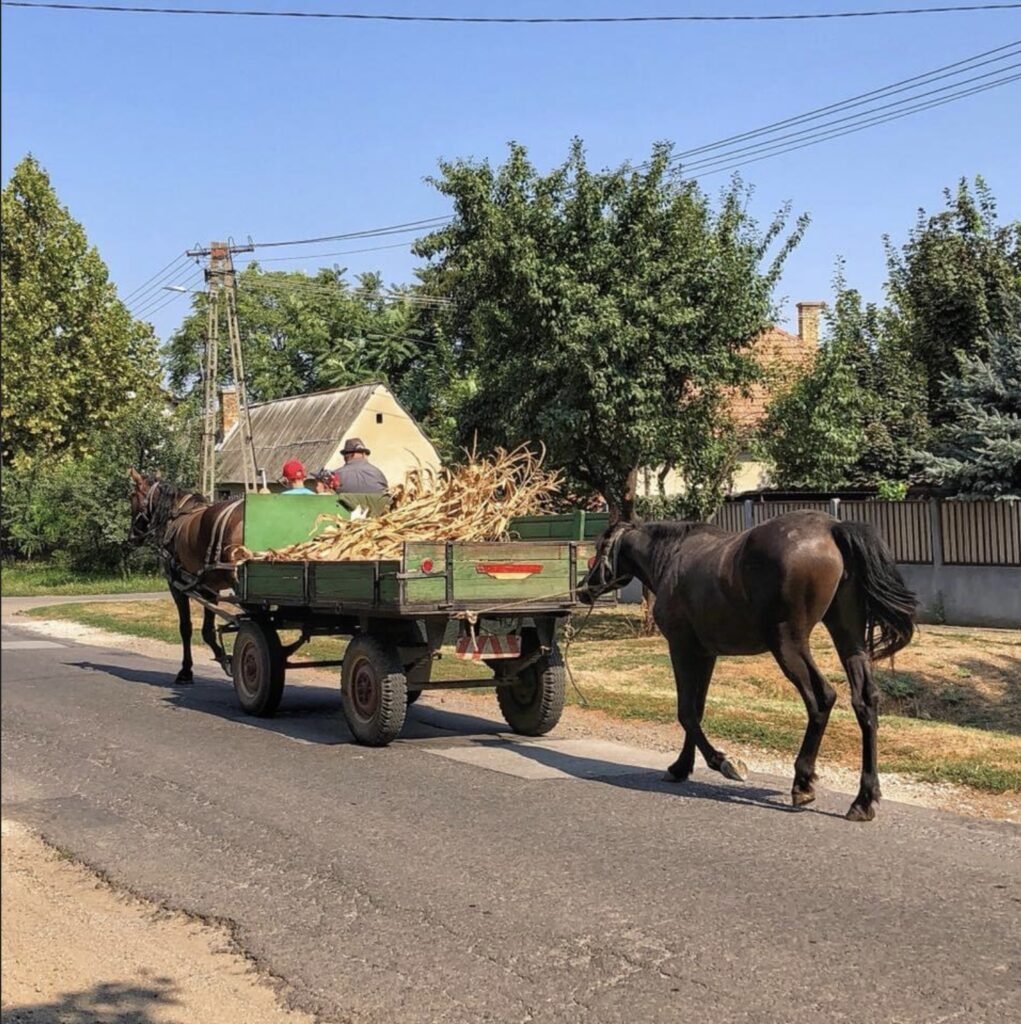
We also took an incredible 9k walk through the countryside to find explore some ruins. This was some traffic we encountered along the way. 😮

In the middle of nowhere we found the ruins of the Zelemeri Gothic Church (Zeleméri Csonkatorony) are the last remnants of Zelemer, a village first mentioned in the papal tithes of 1332, and destroyed during the Middle Ages. Standing atop a Kurgan (kunhalom), the church’s 4.5 x 4.8 m steeple may have also served as a watchtower. Built around 1310, the church was 26 m long, and 6.6 m wide at the nave, having a semi-octagonal shape and north vestry. The village was erased during the Crimean Tartar invasion of 1594, and a few decades afterwards, the whole area became depopulated. The ruins we see today stand as a memorial to Zelemer village.
So much to find in this part of the country. Who would have thought Eastern Hungary was such a gem?!


